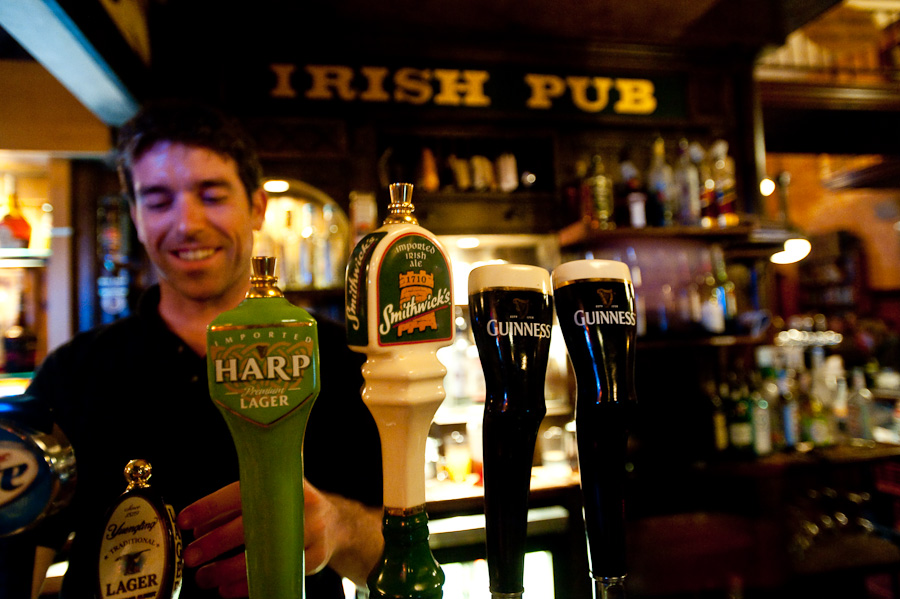Remember yesterday, when I promised not to do another medieval English carol for today? I held true to my word, for today's is a medieval Irish carol! "Wexford Carol" takes its name from County Wexford, which is on the east coast of Ireland, and one of the few traditionally English-speaking counties of Ireland, rather than Gaelic-speaking. Its English language tradition is likely responsible for so English-sounding a name for the country; to be honest, after adding it to my list, I assumed it was yet another English carol based on the name alone.
Every Irish person's reaction to that last line
As it happens, the origins of "Wexford Carol" are the subject of some debate in the realms of carol history academia (that's totally a thing). If you skim the surface of its history you'll find many claims of the carol dating to the 12th century, often in it's "original" Gaelic form. However, as I said before, County Wexford is an English speaking region, so it's much more likely that the opposite is true: the lyrics were originally in English and adapted to Irish Gaelic by musicians intent on preserving the language, especially in the early 20th century. So it seems that while the carol may well date to a few centuries ago, it's likely not that old. There's a bit of revisionist history at play here. The author is anonymous, and likely will remain so, since there are a number of other carols which are strikingly similar to "Wexford Carol, lyrically anyway, dating from the late medieval period. But some historical digging seems to place the modern version in a specific location: Enniscorthy, the second-largest town in County Wexford at just over 10,000 residents. Suffice it to say, this is a rural part of the emerald isle. The basis for that being the town of origin comes from the song's original transcriber, Dr. William Grattan Flood, musical director at St. Aidan's Cathedral in Enniscorthy from 1895 until his death in 1928. Dr. Flood apparently transcribed both the lyrics and the music from a local singer in the town, obviously sometime in the early 20th century (quite possibly 1928, the year of his death), giving us the version we know today. However, Flood's interpretation of the tune may not be reflective of its traditional nature, as one source claims, "his appreciation of detail was enthusiastic rather than thorough, and the content of his books were often distorted by his national and religious commitment."
Romanticizing traditional Irish culture?
Nah, never heard of that.
The lyrics describe the Nativity almost point for point, beginning with Mary and Joseph finding nowhere to stay in Bethlehem and ending with the arrival of the shepherds. The rhyme scheme of the lyrics is another argument against an early medieval origin, since apparently such a method was not used until the 15th century at the earliest, which also might explain the parallel origin of similar carols ("All You That Are to Mirth Inclined," "Old Christmas Returned" which also seem to date from the 15th or 16th century). However, it's "Wexford Carol's" tune that draws attention to it, which employs a haunting mixolydian mode form, giving it a sort of unfinished or cliff-hanging feel. That's thanks to a minor seventh in an otherwise major scale. Feel free to read all about it on your own time, because that's a gross oversimplification of it, but I have neither the time nor music theory knowledge to explain it further. It's easier to just listen to it.
It turns out I kept my promise even better than I had expected: not only is this carol decidedly not English, but it's also probably not medieval either! Even if it is, and not all evidence for that case is refuted, one problem with word-of-mouth passing of music is that by the time the song makes it into writing it's almost a completely different song than it was centuries before. So in theory you could argue that even proven "traditional" carols are merely their 18th and 19th century interpretations and bastardizations of their former selves. There's nothing particularly wrong with that, it just makes me wonder just how ancient some of our other "ancient" traditions really are.


Wexford got its English-sounding name from the medieval Vikings (Waesfjord, which sounds much better than inlet of the mudflats). As a child in Ireland, I did hear some of the old-style (sean nos) singers, hauntingly beautiful modal sound. What is now traditional music, and traveled to Appalachia, Nova Scotia, etc. is regular Bach and later-style western music. I would guess that the carol is not medieval, but the tune may be very old indeed.
ReplyDeleteWexford got its English-sounding name from the medieval Vikings (Waesfjord, which sounds much better than inlet of the mudflats). As a child in Ireland, I did hear some of the old-style (sean nos) singers, hauntingly beautiful modal sound. What is now traditional music, and traveled to Appalachia, Nova Scotia, etc. is regular Bach and later-style western music. I would guess that the carol is not medieval, but the tune may be very old indeed.
ReplyDeleteEnglish only gained a foothold in mid and north Wexford in the 17th Century, and although Enniscorthy itself would have been more Anglophone because of it being a small town, even it was still under the control of the McMurragh-Kavanaghs up until the mid 16th century.
ReplyDeleteThe air is probably Irish, and the modern English lyrics/carol added in 17th or 18th century.
Much more melodic than the series of carols from south Wexford composed in the late 17th century and generally known as the Kilmore carols.
I've only a passing acquaintance with the carol, but the weird rhythm required to fit the English words make me think the original words were Irish.
ReplyDelete